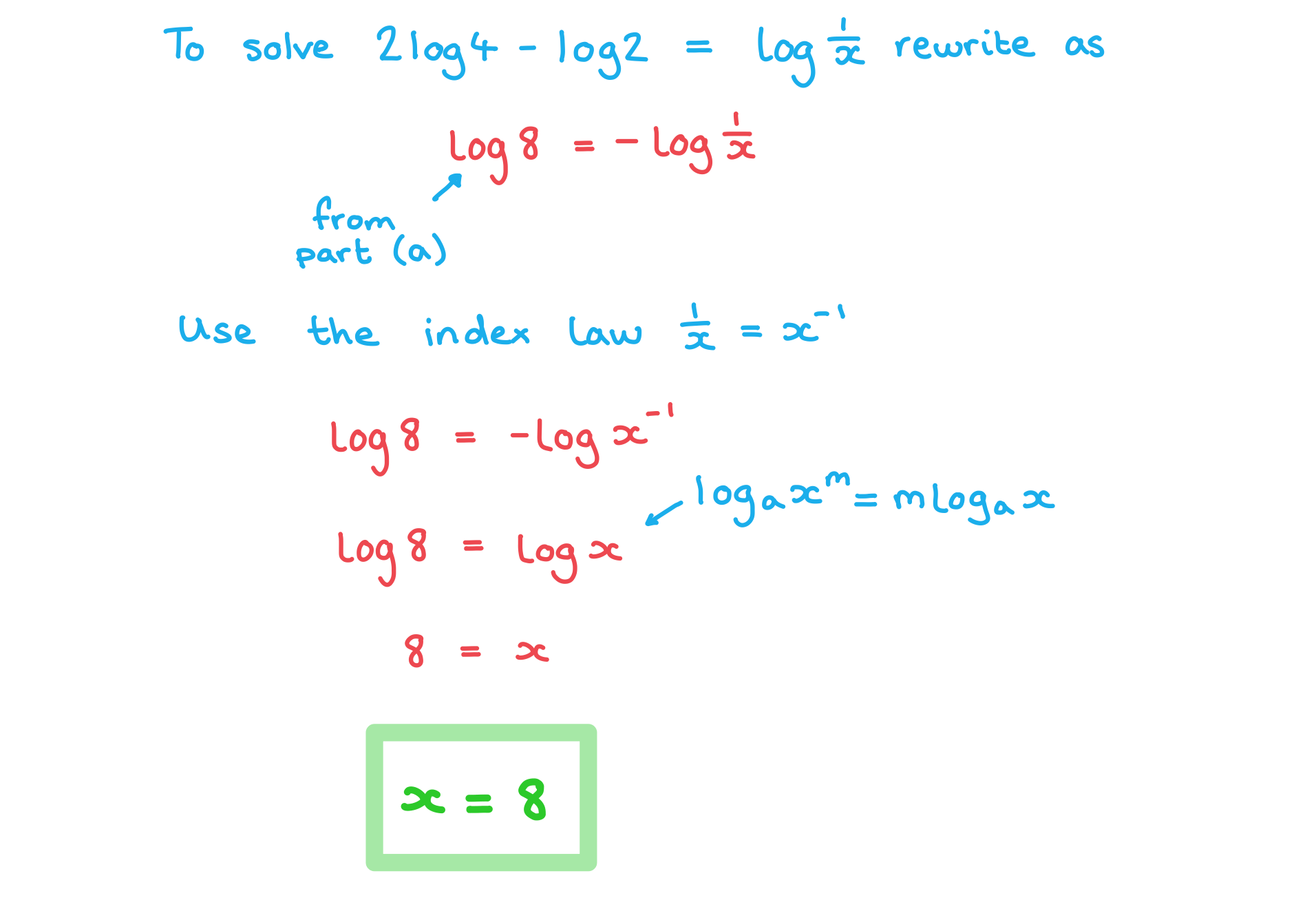Laws of Logarithms (DP IB Analysis & Approaches (AA)) : Revision Note
Did this video help you?
Laws of Logarithms
What are the laws of logarithms?
Laws of logarithms allow you to simplify and manipulate expressions involving logarithms
The laws of logarithms are equivalent to the laws of indices
The laws you need to know are, given
:
This relates to
This relates to
This relates to
These laws are in the formula booklet so you do not need to remember them
You must make sure you know how to use them

Useful results from the laws of logarithms
Given
This is equivalent to
If we substitute b for a into the given identity in the formula booklet
where
gives
This is an important and useful result
Substituting this into the third law gives the result
Taking the inverse of its operation gives the result
From the third law we can also conclude that

These useful results are not in the formula booklet but can be deduced from the laws that are
Beware…
…
These results apply to
too
Two particularly useful results are
Laws of logarithms can be used to …
simplify expressions
solve logarithmic equations
solve exponential equations
Examiner Tips and Tricks
Remember to check whether your solutions are valid
log (x+k) is only defined if x > -k
You will lose marks if you forget to reject invalid solutions
Worked Example
a) Write the expression in the form
, where
.

b) Hence, or otherwise, solve .

Did this video help you?
Change of Base
Why change the base of a logarithm?
The laws of logarithms can only be used if the logs have the same base
If a problem involves logarithms with different bases, you can change the base of the logarithm and then apply the laws of logarithms
Changing the base of a logarithm can be particularly useful if you need to evaluate a log problem without a calculator
Choose the base such that you would know how to solve the problem from the equivalent exponent
How do I change the base of a logarithm?
The formula for changing the base of a logarithm is
This is in the formula booklet
The value you choose for b does not matter, however if you do not have a calculator, you can choose b such that the problem will be possible to solve
Examiner Tips and Tricks
Changing the base is a key skill which can help you with many different types of questions, make sure you are confident with it
It is a particularly useful skill for examinations where a GDC is not permitted
Worked Example
By choosing a suitable value for b, use the change of base law to find the value of without using a calculator.


You've read 0 of your 5 free revision notes this week
Sign up now. It’s free!
Did this page help you?